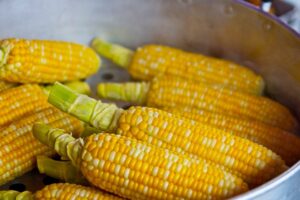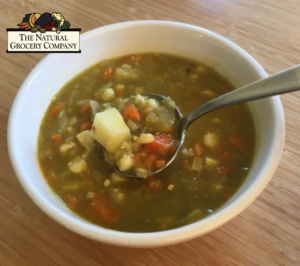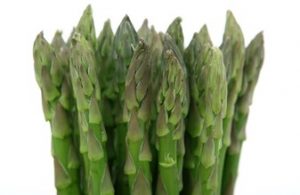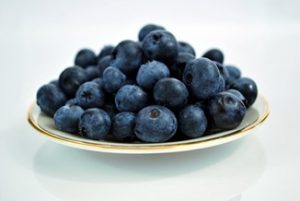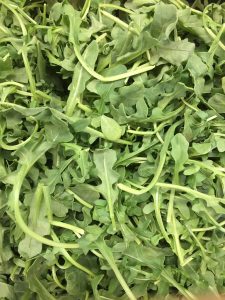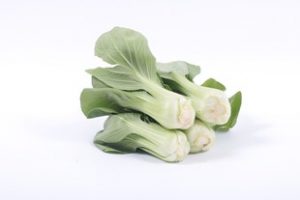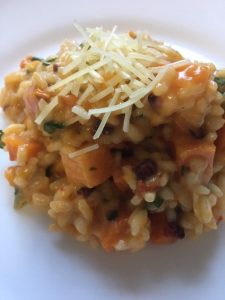Thank You Cult Crackers
Organic Sweet Corn
Season: June to October in Northern California
Flavor: Sweet, succulent and crisp.
Storage: The fresher the better! Try to cook fresh corn the same day you purchase it. Despite the advances in new varietals, it still holds true that the longer corn is in your fridge the more starchy and less sweet corn becomes. When choosing don’t worry about dryer husks or brown silks but if the kernels start to dimple that is a sign it is going to be starchy.
How to use: Raw, steamed, boiled, pan fried- just about any way you can imagine!
Here’s a link to a “No-Pollo” Verde Soup with Sweet Corn on our site:
https://naturalgrocery.com/2021/08/14/no-pollo-verde-soup-with-sweet-corn/
Nutrition: Fresh corn is a good source of vitamin B6, thiamin, niacin, magnesium, iron and a number of other important minerals. Eating corn with beans provides all the amino acids humans need.
“No-Pollo” Verde Soup with Sweet Corn
“No-Pollo” Verde Soup with Sweet Corn (Vegan, Gluten Free)
Total Time: 30 minutes (5 minutes prep time 25 minutes cooking time)
Yield: 2 quarts (4x16oz portions)
This bright, slightly tart soup tastes just like the chicken version but is completely free of animal products! It’s also a quick pull together that tastes like it has been cooking on the stove all day.
1 cup chopped yellow onion (aprox 1 medium yellow onion)
1 cup chopped carrots (aprox 2 large carrots)
1 cup chopped celery (aprox 2 large stalks celery)
1 cup diced yellow creamer potato (skin on)
2 cups corn (aprox 2 ears of corn)
1 box Imagine No-Chicken Broth (32oz)
2 cans Herdez Salsa Verde (7oz cans)
1/3 cup olive oil
salt & pepper to taste
Use a food processor to chop first the onions, set aside, then the carrots, set aside, then the celery, set aside. I pulse my machine about 20 times to get the size I like. Take the corn off the cob with a sharp knife and then using the back side of the knife squeeze the “milk” from the cob, set aside. This contains the germ of the corn kernels and will help thicken your soup. Wash your potatoes and dice them, set aside. I like to leave the skin on because there’s a lot of nutrition in it.
Put the olive oil in your soup pot and set your heat on medium/high. Add the onions and cook until they start to color a bit. Add the carrots and cook a little longer. Finally add the celery and cook until slightly soft. In total the veggies should take 5-8 minutes. Add the Imagine No-Chicken Broth. Add the diced potatoes. Bring to a boil and then turn down to a simmer. After 10 minutes add the Salsa Verde and the corn. Cook until the potatoes are soft. If it is too thick then add a little water until it has the broth/veg ratio you prefer. Season with salt and pepper to taste.
Recipe courtesy of Wilted Made.
Asparagus (green)
Season: February to June
Flavor: Its flavor is mildly sulphuric, mostly sweet and slightly nutty, more-so when grilled.
Storage: Store asparagus in a bag in the refrigerator, preferably in the crisper between 32 and 36 degrees F. Properly stored asparagus can last between 1 and 2 weeks. Things can go downhill for asparagus pretty rapidly, especially the tips, so try to eat it as soon as possible. If you must wait, you can preserve your spring-y bounty by trimming the ends of the stalks and standing the bunch (still bound together — if you bought them loose, then tie them up for balance) in a cup of water in the refrigerator.
How to use: Some people peel asparagus, but unless you are dealing with exceptionally woody stalks, it is generally unnecessary. However, you absolutely should trim the end of each spear. The question is, how much should you trim before preparing? This tip takes the guesswork out of trimming: Grasp a stalk with one hand around the root end at its furthest point, and the other about mid-way down the stalk and gently bend. Wherever it breaks is where it should be trimmed to.
Don’t be afraid of Jumbo/XL/Large Asparagus! Fat asparagus is actually more tender than thin. Each stalk has the same amount of support fibers, so Large Asparagus stalk has more flesh in between those fibers.
The most important thing — by far — about preparing asparagus is not to overcook it. It is delicious raw, shaved or sliced quite thin, steamed or roasted or grilled (which enhances its nutty flavor).
Nutrition: Like most green vegetables, asparagus is good for you. Among its healthful properties are folate, Vitamin C, potassium, inulin (which is said to be “prebiotic” and is known to aid in digestion), anti-oxidant and anti-inflammatory properties and possibly anti-cancer effects.
Blueberry Pints (Forbidden Farm, CA)
Forbidden Farms is located in Santa Barbara County, CA.
Season: May to July (Forbidden Farm yields an early crop even for California!)
Flavor: Blueberries walk the line between tart and sweet, although cultivated varieties are now bred for increasing sweetness and large, plump fruits. Depending on the varietal, the berries may be very small (see: lowbush/wild varieties) or quite large and plump, and the color may vary from sky blue to deep, dusky purple. Wild varieties tend to have a more concentrated blueberry flavor, while cultivated varieties tend to be juicier.
Look for firm, dry, plump blueberries with smooth skin and no shriveled or moldy bits. Pass on greenish or red blueberries — this generally means that they are underripe. Some blueberries may have a faint white powdery coating (called “bloom”) that is naturally occurring and helps to protect the berries.
Storage: If you plan to use your blueberries within a day, store them right on the counter. Otherwise, stick them, unwashed, in the fridge in the container they came in. They will keep for up to a week. Take a quick look-through for any damaged berries and remove them before storing — damaged blueberries invite moisture and mold that can quickly ruin an entire container of the fruit.
How to use: Naturally, blueberries are delicious eaten out of hand, but they also add sweet-tart depth to lots of dishes, both sweet and savory.
On the savory side, blueberries pair deliciously with pork and duck. Toss a handful of berries into a green salad; or try gently mixing in some of the fruit with whole grain dishes, like quinoa or wheat berries. Blueberries are also quite delicious with cheese — team up blueberry preserves or fresh berries with goat cheese or harder, strong cheeses like Manchego for a sweet-salty-tangy flavor combo.
But where blueberries really shine is in desserts, their natural acidity providing a welcome counterbalance to baked goods, puddings and other sweet treats. Of course, there are the ubiquitous (but no less awesome) blueberry muffins and pies. Blueberries are also awesome in smoothies and in parfaits. Also try subbing dried blueberries for raisins in cookie and other dessert recipes.
Pro tip:
- Have you ever baked a batch of blueberry muffins, only to discover that your blueberries have turned green? This is because the pigments in blueberries (primarily anthocyanins) turn green when cooked with alkaline ingredients like baking soda. To correct this problem, add a bit of acid to the mixture, in the form of buttermilk or yogurt, and/or use less baking soda.
Nutrition: Blueberries are one of the world’s healthiest fruits. Not only are they a good source of Vitamin K, Vitamin C and manganese; they are also high in fiber and relatively low in calories. The little blue fruits are naturally rich in polyphenols, antioxidant chemicals that are increasingly linked to big-time health benefits, including in cardiovascular health, brain functioning (including memory) and even cancer prevention.
Arugula
Season: February to November
Flavor: Arugula is a peppery, nutty salad green with a sharp and bitter bite, like watercress. Be on the lookout for firm leaves without any yellow or signs of mushiness. Mass-produced “baby” arugula in pre-washed sacks tends to be very mild. “Wild arugula” is another variety with lacier leaves and a more assertive flavor.
Storage: Store in a container or bag to preserve freshness. For arugula with the roots attached, wrap a moist towel around the roots and store in a bag. Store in vegetable drawer or crisper around 32 to 36 degrees F.
How to use: Bunched arugula is notoriously sandy. Remove the root ends and place leaves in a large bowl. Fill halfway with cold water. Lift arugula out of the bowl and discard sandy water. Repeat, until water is free of sand, three to four times.
If using arugula raw, make sure leaves are thoroughly dry, because wet arugula does not take to vinaigrette very well and quickly clumps up. The best way to do this is with a salad spinner.
Arugula can be eaten raw or cooked. Arugula is great in salads with other greens, oil and vinegar. Arugula can be lightly sautéed and added to pasta dishes, vegetable medleys, etc.
Nutrition: Arugula is rich in vitamin C and potassium
Bok Choy
Season: Year Round in California
Flavor: Bok choy has a mild, cabbage-like flavor. As with most dark leafy greens, the green part of bok choy has a slightly bitter mineral flavor which can give way to an even, mild and “nutty” flavor. The white stalk is full of water and has a crunchy yet juicy texture. There are a fair amount minerals in the stalk so do use it!
Storage: Store in the vegetable bin of your refrigerator (32 to 36 degrees Fahrenheit) in a paper or perforated plastic bag. Do not wash until you are ready to use. Use within 3-4 days. If you use a non-perforated plastic bag it may keep up to a week but do watch to make sure it doesn’t go bad.
How to use: Separate the vegetable, no matter what size, into stalks and leaves. Cook the stalks first, time depending on size, then add the leaves, which typically take no more than two minutes to wilt. It quickly cooks, especially baby bok choy, and is commonly sautéed with garlic, chili flake, and soy sauce. Bok choy is classically used in Chinese and Japanese cooking, and is a great addition in stir-fry, curries, and soups. You can also cut it thinly and add it to salads, as you would any cabbage. Grilling works well but make sure you layer the leaves on top of something else so they don’t dry out before the stalks are cooked!
Although it will forever be known first and foremost as a Chinese green, the vegetable has worked its way into many cuisines around the world, particularly in the Caribbean, the result of the massive Chinese diaspora of the 19th century. Don’t be surprised if you see “pak choi” or “joy choy” on menus or in markets in Trinidad, Guyana, Jamaica or Cuba. Some of these are the many varietals of bok choy and sometimes the names are used interchangeably.
Nutrition: Bok choy is a good source of Vitamin C, potassium and calcium. It is also a great source of beta-carotene, which is a precursor to Vitamin A. For those who do not eat meat or dairy, which are naturally rich in Vitamin A, these dark leafy greens can help fill the gap. Plus, one cup contains just 20 calories!
Aji Panca Butternut Squash Risotto
Aji Panca Butternut Squash Risotto
6 Servings
Ingredients
- 1 butternut squash (2 to 3 pounds) peeled, seeded, cut into 1/4” dice
- 1/4 cup olive oil, plus 3 tablespoons
- 2 teaspoons kosher or sea salt, divided, or to taste
- 6 to 7 cups Imagine No-Chicken Broth
- ½ cup mascarpone cheese
- 1 to 2 chopped, seeded, rehydrated Aji Panca chiles (take the seeds out while still dry and then soak in water overnight)
- 1 tablespoon maple syrup
- 2 cup finely chopped yellow onion
- 1/2 cup water
- 2 cups Arborio rice
- 1 cup white wine
- 2 tablespoons unsalted butter
- 1/2 cup grated Parmesan cheese
- 1/2 cup chopped fresh flat leaf parsley
To Prepare
- Set a rack in upper third part of the oven and preheat to 400 degrees Fahrenheit.
- Place the butternut squash on baking sheet, drizzle 3 tablespoons of olive oil, sprinkle with the 1 teaspoon of the salt and toss. Place in the oven and roast for 20 to 25 minutes, until cooked and very soft. Scrape onto a bowl and set aside.
- Pour the no-chicken broth into a saucepan set over medium-low heat. Bring to a simmer, then reduce heat to low.
- While your both comes to a simmer, combine the mascarpone cheese with the maple syrup in a small bowl. Set aside.
- Before moving on, be ready with your roasted butternut squash and chicken broth that should be at a low simmer, if need be, raise heat to medium.
- Heat ¼ cup olive oil in an extended casserole or Dutch oven set over medium heat. Once hot, add the onion and ½ teaspoon of the salt, and cook for 8 to 10 minutes, stirring often, until softened and wilted. Pour in the water and continue to cook and stir until the water has completely evaporated, the onions have become even softer, and they begin to glisten with the oil.
- Incorporate the rice and stir well to combine with the vegetables and coat in the oil. Add the remaining ½ teaspoon salt, stir, and cook 3 to 4 minutes. The rice should start to smell toasty, but it shouldn’t brown.
- Pour in the wine, stir, and cook 2 to 3 minutes more until it completely evaporates, then immediately add a large ladleful of the simmering broth. Cook at a simmer until it is absorbed and you can see the bottom of the casserole when you stir.
- Add the next ladle of broth, along with about a fourth of the roasted butternut squash, simmer and cook until the liquid is absorbed again. Repeat 3 more times, adding another ladle of broth and a fourth of the squash each time, until all the squash has been added. Add the chopped Aji Panca.
- Continue adding broth by the ladleful until the risotto is cooked al dente. Add a cup more broth and stir before you turn it off; it should be quite soupy, yet the broth should be thick.
- You may have used only 6 cups of the broth or all 7 cups, depending on the heat of your stovetop and the weather where you live. What matters is the rice is still al dente and the consistency still seems a little bit soupy.
- Turn off the heat, add the chopped parsley and the seasoned mascarpone cheese. Stir well to mix. Sprinkle on the grated parmesan and serve.
Laura’s Peperonata
Summer is still in full swing despite the kids heading back to school and it being “Faugust” here in the San Francisco Bay Area. When the peppers are nice and sweet it’s great to make this Italian style relish and have it on hand. Traditionally it is made with tomatoes and basil but Laura omits these in her recipe and adds a little acid by using rice wine vinegar. You can use it on bruschetta, sandwiches, as a topping for fish or toss it with pasta. This little quick relish packs a flavorful punch!
Laura’s Peperonata
- Prep time: 10 minutes
- Cook time: 10 minutes
- Yield: Serves 4 to 6
Ingredients
- 2 tablespoons extra virgin olive oil
- 2 red bell peppers, seeded, sliced into 2 1/2 to 3-inch long strips
- 2 yellow bell peppers, seeded, sliced into 2 1/2 to 3-inch long strips
- 1 medium red onion, sliced into half-moons
- 2 garlic cloves, sliced thin
- 2 tablespoons capers
- 1 teaspoon dried oregano
- 1 tablespoon cane sugar
- Salt and pepper to taste
- 1/4 cup rice wine vinegar
- Lemon juice
Method
1 Sauté the onions: Heat olive oil in a large sauté pan on medium high heat. When the oil is shimmering, add the onions. Sprinkle with a little salt and sauté for 2-3 minutes, until the onions just begin to color.
2 Add the peppers: Add the peppers and stir well to combine with the onions. Sauté for 2-3 minutes, stirring often. The peppers should be al dente—cooked, but with a little crunch left in them.
3 Add the garlic, capers: Add the garlic and capers, and sauté another 1 minute.
4 Add sugar, oregano, rice wine vinegar: Add the sugar,dried oregano and rice wine vinegar. Cook 1 minute.
6 Add salt, black pepper, lemon juice: Turn off the heat and adjust your salt amount. Grind some black pepper over everything. Right before serving squeeze a little lemon juice over the dish.





